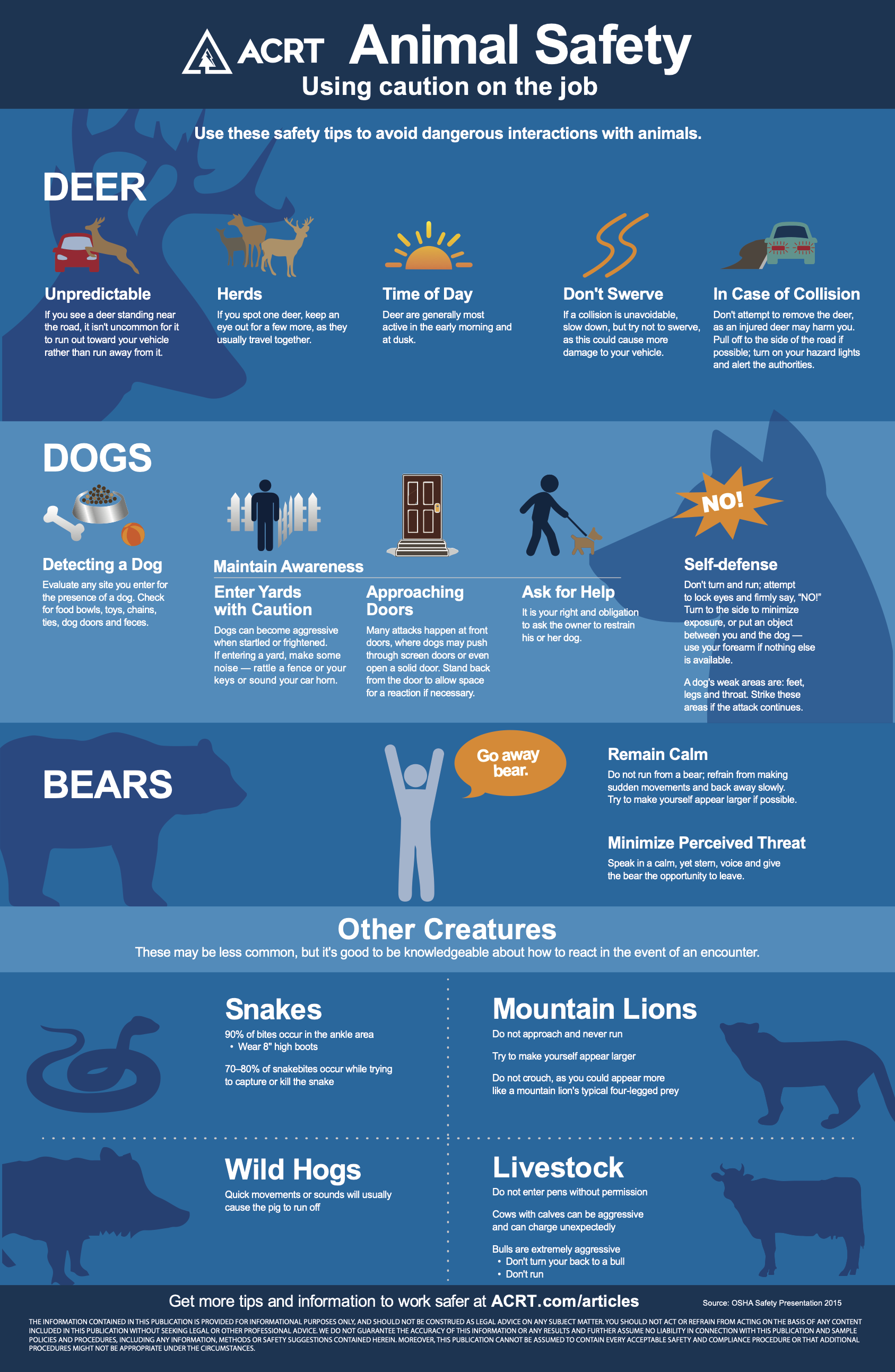Effective utility vegetatiomanagement (UVM) begins and ends with safety. It’s a founding principle of ACRT, Inc., and we strive to uphold it in everything we do.
Staying safety conscious extends across all aspects of UVM. It’s not just the tools and techniques you use every day—it’s understanding your environment, too. Animal encounters may not always be at the forefront of your mind, but they’re no less an ever-present safety threat. Do you know the best way to minimize your chances of a deer strike while driving from site to site? The proper protocols for entering a residential yard with a dog?
Read on as we take stock of some of the more common creatures found where UVM workers perform their duties, and the essential safety tips you should know in the event of an encounter.
![Animal Safety [Infographic]](https://acrt.com/wp-content/uploads/2017/12/animal-safety.jpg)
